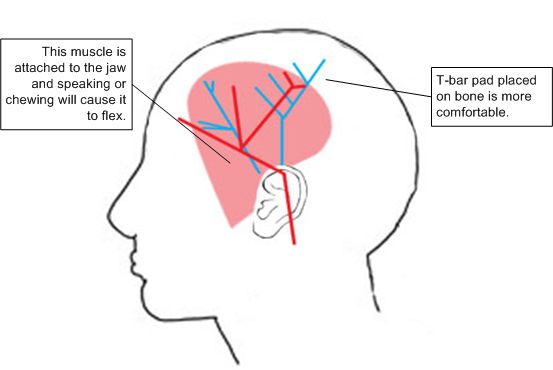Adjusting Headsets for Comfort
Honeywell has designed the SR Series headsets based on data for most head shapes
and sizes. Because the headset is the most personal piece of voice equipment and must
remain stable while workers perform very physical tasks, users may benefit from these
headset adjustment guidelines.
- Placement of the "T-bar" pad: The SR-20, SR-21, SR-30, and SRX models
have pads called "t-bars" opposite the speaker side of the headset. The t-bar
should be positioned on a part of the head with the least amount of
muscle.As an operator speaks, the muscle above the ear flexes. If the t-bar is placed on this muscle, the headset applies pressure to the artery and nerves beneath it and can cause the operator some discomfort. The operator can locate this muscle by moving his or her jaw and feeling the area above the ear for movement. Some operators choose to alternate the headset position on either side of their heads during their shifts.

- Headset pad options: Honeywell offers a variety of pads to meet the
unique requirements of workers and working conditions.
- Standard foam pads: provide cushioning and soft surfaces wherever the headset comes in contact with the operator. Available on all headsets.
- Leatherette ear pads: have a faux leather exterior that is a more firm and supportive and more moisture resistant than standard foam pads. Offered for all SR-20 through SR-40 models.
- Memory foam pads: offer superior cushioning support and comfort. Available in earpads for the SR-20/21 and in t-bar pads for the SR-20/21 and SR-30.